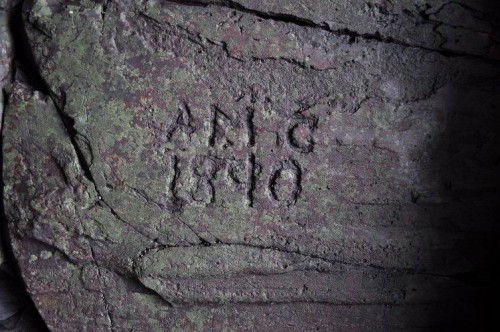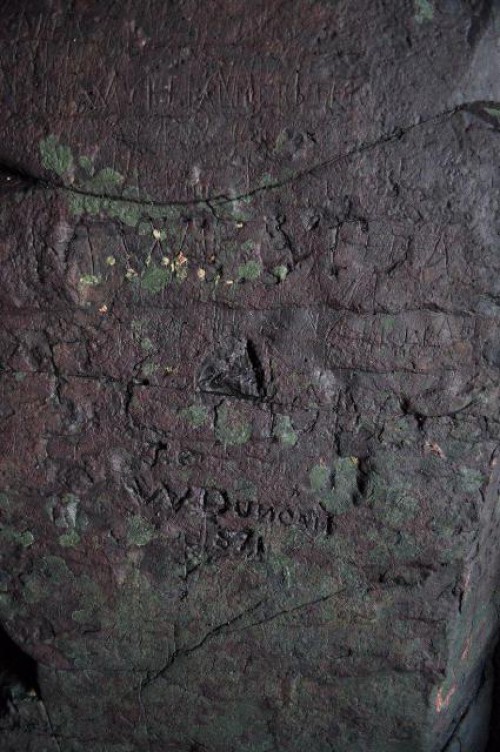VICTORIAN “vandals” carved their names on one of the greatest natural wonders in Britain, a local historian has discovered.
The spectacular basalt columns of Fingal’s Cave in the Inner Hebrides have enchanted great composers and poets as well as Queen Victoria herself.
But Iain Thornber has discovered that some visitors to the cave on uninhabited Staffa in the late 19th Century did not always treat fabulous hexagonal columns with the respect they deserve.

A close examination by Thornber has revealed what he has described as a Victorian version of Twitter – hundreds of initials and dates carved into the tough basalt rock deep inside the cave.
Mr Thornber said: “I think they probably wanted to be remembered. It was very difficult getting to the island so they had to record something.
“It’s something in the human psyche, you want to tell your fellow man ‘I’ve been here, I’ve done this.’
“It was like the Victorian version of Twitter or YouTube.”
Despite the number of carvings, they have gone undiscovered for more than two centuries.
Mr Thornber discovered them by chance during a trip to the cave last weekend.
“I went quite a bit into the cave – it’s not the easiest spot to get to. From where I was standing, and the way the light shone in and hit off the water, it just perfectly illuminated these images.
“I started seeing them out of the blue and when I took a closer look I realised there were hundreds of initials, names and contemporary graffiti going back to the early 1800s.
“It was very exciting. I think they are from visiting sailors, geologists, workmen and crews but I’m hoping there will be sets of initials from some of the famous people who have visited.”
One clear set of initials and a date – “A M G 1890” – has been carved deep into the basalt with what appears to have been a hammer and chisel.
Another visitor had simply carved “ J Cameron”.
He added: “I’m quite confident that the majority of these are from the early period of the nineteenth century.
“If you go to any public loo you see one piece of graffiti, which is then followed by another.
“I think as soon as one person did it, it then occurred to the next person. Some of the graffiti is on top of other stuff.”

He says later visitors must have been so struck by the beauty of the cave that they missed the etchings: “It’s very, very spectacular, you feel very small when you’re inside it. It’s something very grand that hasn’t been designed by man.
“I don’t think it spoils the cave. You can’t see it, it doesn’t leap out at you. I think it makes it more interesting.”
Queen Victoria and Prince Albert were among the nineteenth-century luminaries to have visited the cave, and Mr Thornber is now trying to match up the initials to the visitors.
He added: “Accounts of many of these early visits used to be held in the inn on the island of Ulva, which was the main point of embarkation from Mull, but unfortunately this interesting and valuable visitors book has been lost.”
The island is owned by the National Trust for Scotland has inspired artists and musicians for centuries.
Mr Thornbur said he had contacted the Trust to record the discovery.
The echoes in the cave, which is walled by strange basalt hexagonal columns, inspired composer Felix Mendelssohn’s Hebrides Overture.
This catapulted the cave to fame in the nineteenth century, which led to visits from poets including John Keats and Alfred, Lord Tennyson.

